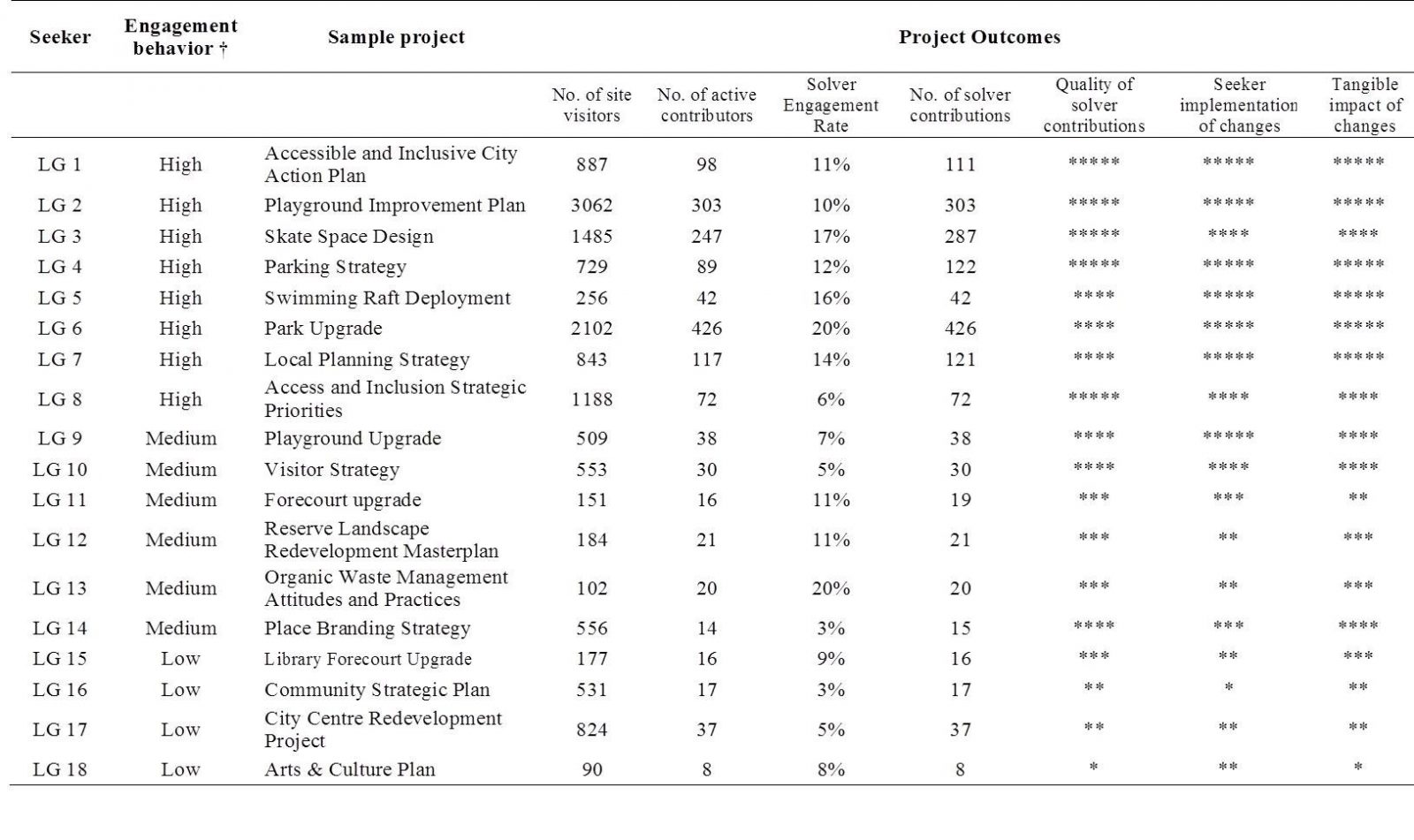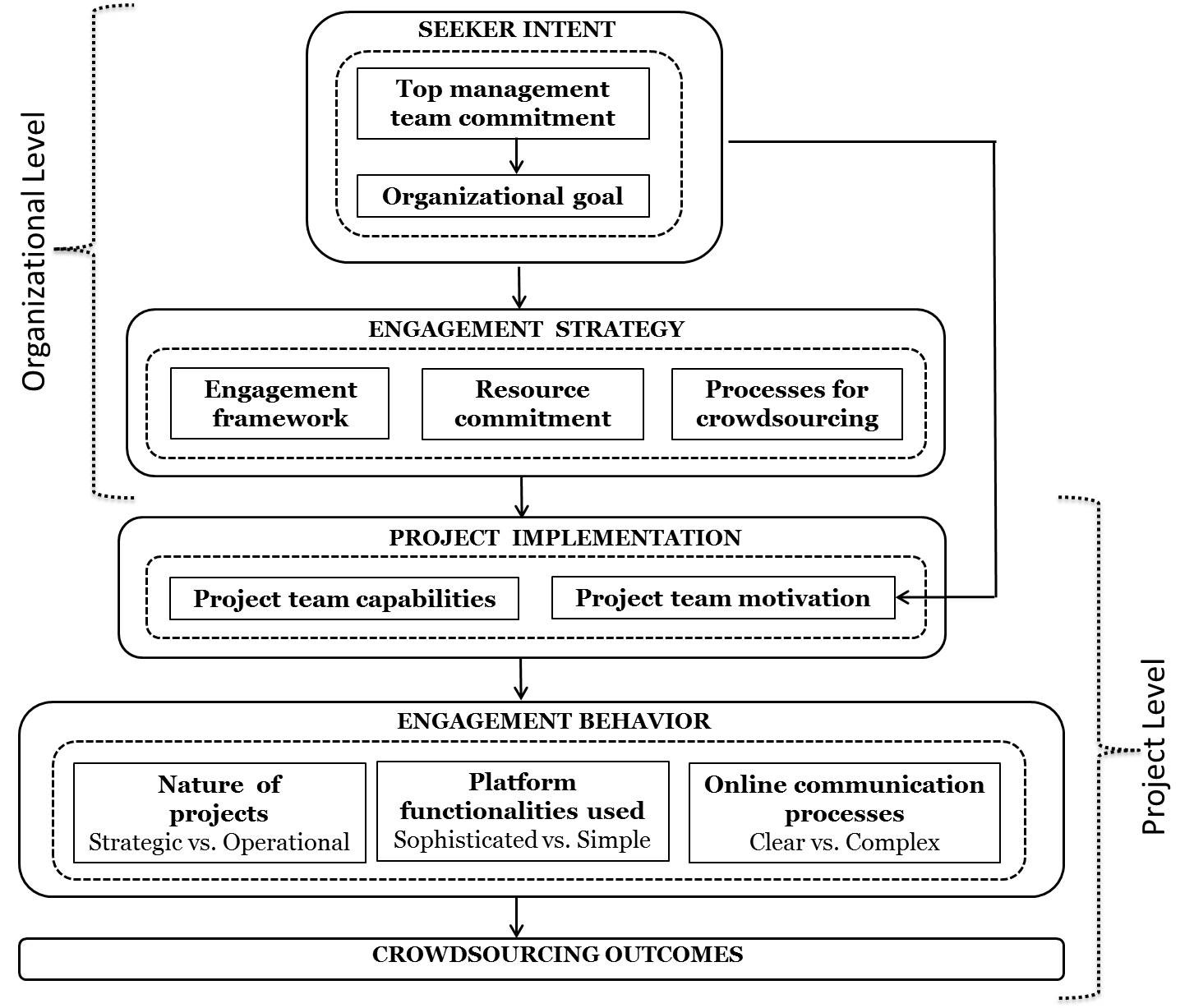
Open innovation has emerged as a novel way for organizations to innovate by collaborating with external stakeholders.
One contemporary application of open innovation is crowdsourcing by which organizations (seekers) engage with an external crowd of potential solvers to obtain innovative ideas and solutions.
Citizensourcing to address societal problems
In this research, we study the use of open innovation by public sector organizations to achieve societal benefits. Our focus is on government agencies that crowdsource from citizens to drive open social innovation, and thus develop new ways to address societal problems – a process also termed ‘citizensourcing’.
Analysing rich data from 18 local governments’ citizensourcing activities, we found that these organizations varied dramatically in their degree of commitment, and thus their strategies for organizing and managing crowdsourcing efforts. This translated into varying levels of seeker engagement and outcomes.

Different levels of engagement:
- Achieving results – the most engaged organizations seek to achieve transformational outcomes for the community and society, and commit the necessary resources and processes for crowdsourcing.
- Symbolic engagement – others viewing crowdsourcing as a way to signal to community members that they have a voice in decision-making.
- Satisfy a regulatory mandate – others made minimal efforts, in this case, citizen involvement is only a way to achieve legitimacy of government decisions rather than co-creating innovative services.
More generally, this shows that the decision to initiate crowdsourcing is necessary but not sufficient for organizations to benefit from the “wisdom of crowds” as advocated by prior research. Based on our findings, we developed a model showing how organizations can crowdsource open (social) innovation.
 A model for effective social innovation
A model for effective social innovation
Successful crowdsourcing effort begins with the seeker organizations’ intent, reflected in the top management team’s commitment, which shaped the organizational goals. This in turn influences crowdsourcing strategy formulation and implementation. Such a robust engagement strategy enhances the capability of project teams to implement crowdsourcing.
Teams with higher project capabilities tend to implement more strategic projects, using a richer range of platform tools and more transparent communication processes, thereby producing more successful crowdsourcing project outcomes.
Besides project team capability, project implementation also depends on team motivation to proactively implement crowdsourcing: when organizational intent is well-articulated by the senior leadership, employees are more motivated, which translates into better crowdsourcing project activities, and ultimately better outcomes. Overall, our results highlight how organizational factors shape the project-level implementation and outcomes of crowdsourcing.
Our insights also allowed us to compare and contrast governmental crowdsourcing with those used by for-profit firms to develop a framework of crowdsourcing modes.
 Comparing governmental and non-government approaches
Comparing governmental and non-government approaches
The non-pecuniary, societal goals of citizensourcing mean that the motive of government crowdsourcing is fundamentally different from the commercial motives of corporate crowdsourcing. Yet, in the nature of the solver interactions, we find that citizensourcing resembles a corporate-sponsored community.
Unlike the crowd seen in corporate crowdsourcing contests, the solvers (citizens) in our sample are brought together by a shared purpose, social identity and peer-to-peer interactions. Hence, they exhibit attributes of a brand community such as those sponsored by BMW or Nike to co-create with customers and reinforce their respective offline loyalties and purchase behaviors.
This hybrid use of virtual and offline relationships offer parallels to that of local governments, who often combine online and face-to-face interactions. Similar to brand communities, governments also seek customer (citizen) knowledge to incorporate in their service delivery and strategy planning process, and seek out local contributors motivated by intrinsic, pro-social motive to contribute to community and societal welfare. On the other hand, firms usually use crowdsourcing contests to find a solution to specific R&D or technical problems, and motivate their solvers through awards or extrinsic incentives.
More generally, we show how seeker organizational factors and choices shape project-level implementation and success of crowdsourcing efforts, as well as provide insights for open innovation activities of other smaller, geographically-bound organizations.
This article is a summary of Krithika Randhawa Ralf Wilden Joel West Crowdsourcing without profit: the role of the seeker in open social innovation which appears within a special issue of R&D Management.
For more details or information, do not hesitate to contact Krithika Randhawa:
Email: [email protected]
Twitter: @krandhawa

